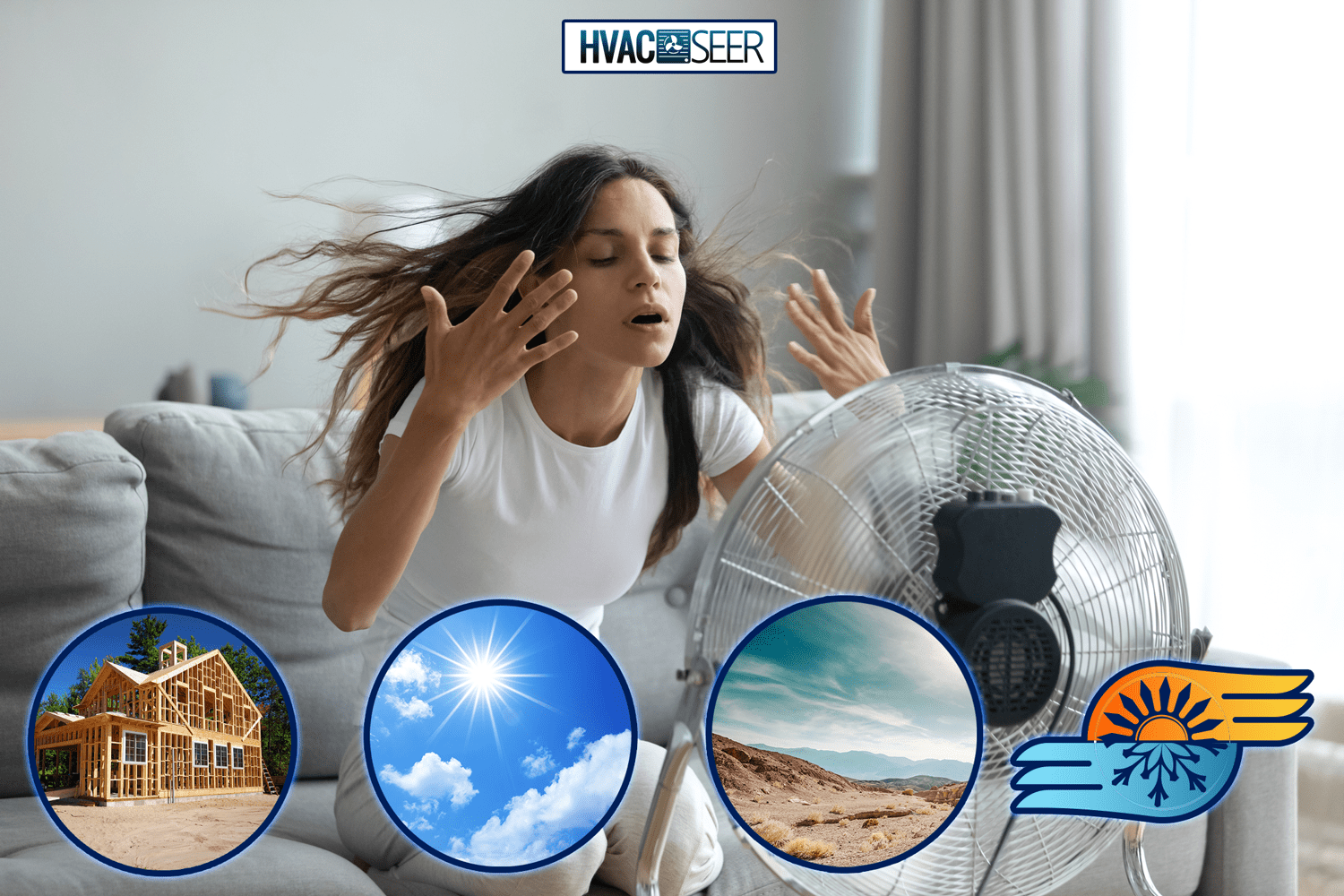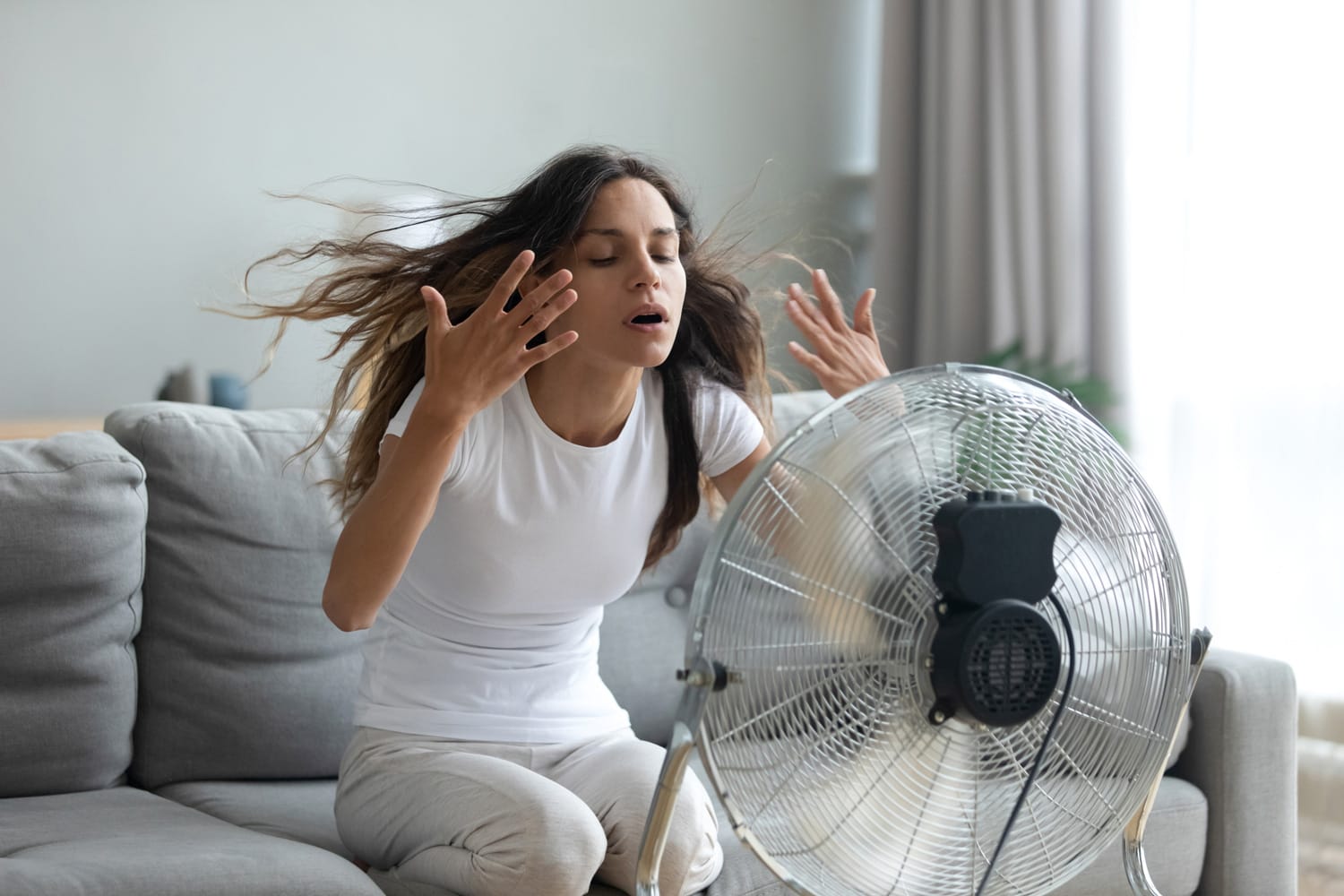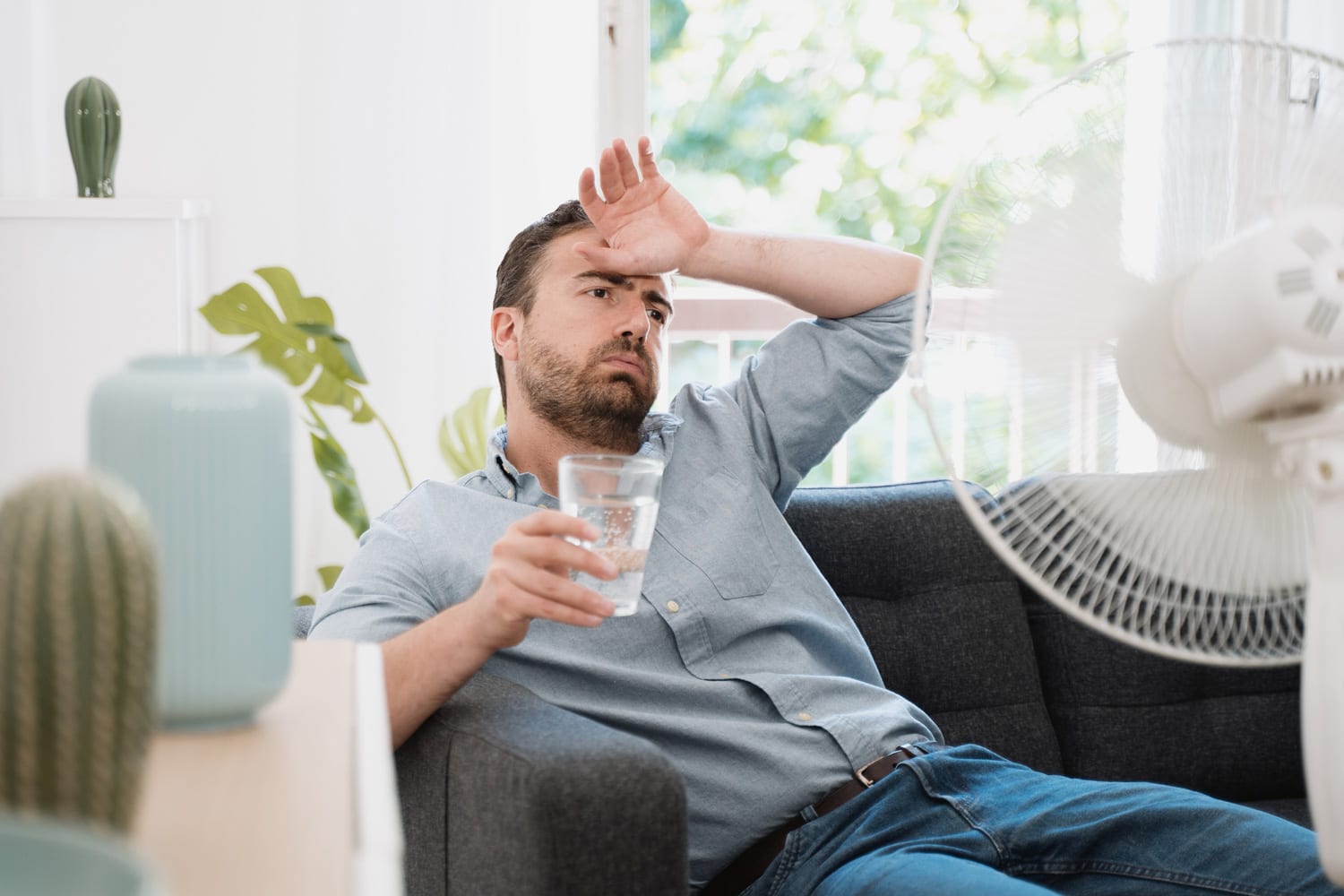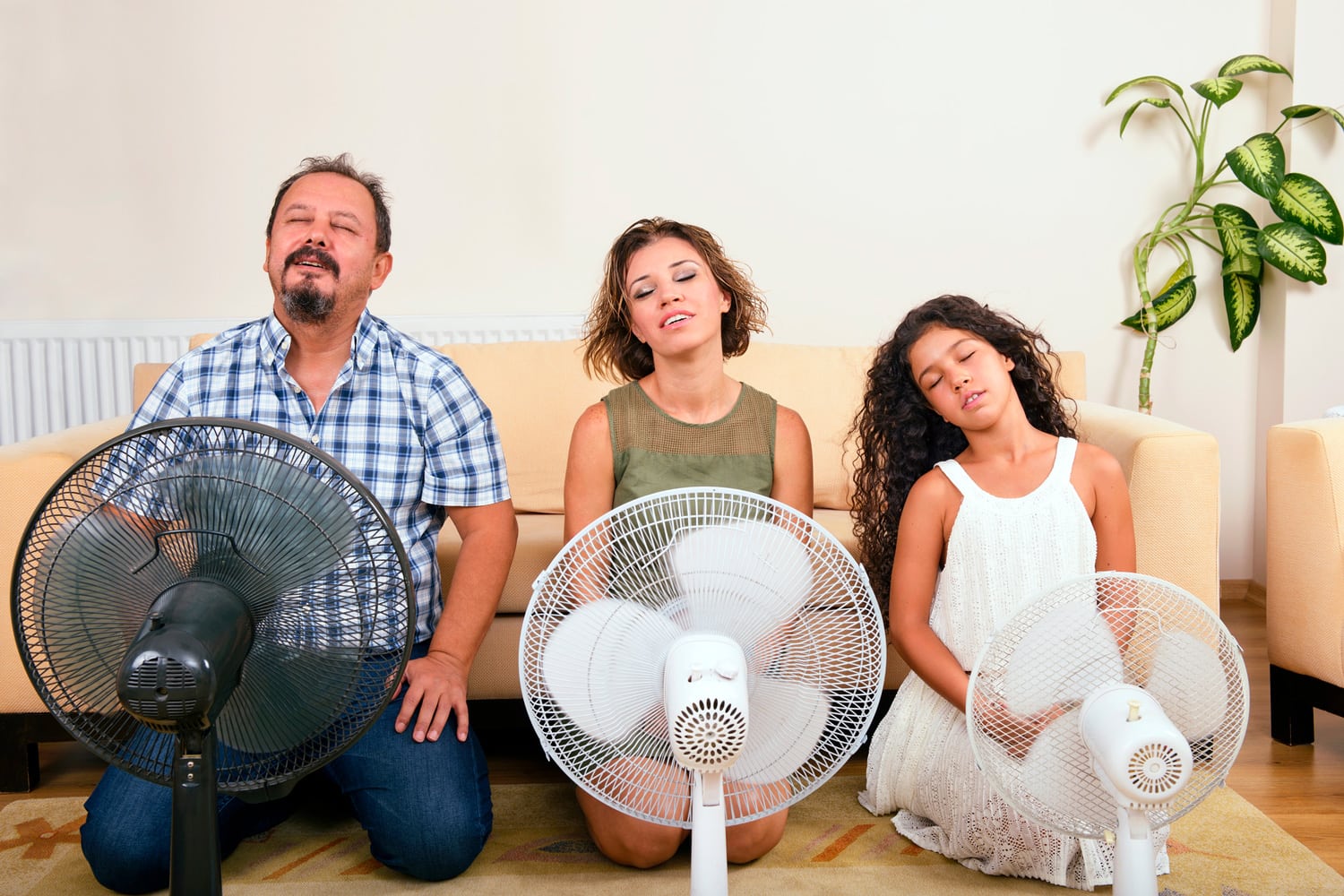It sounds strange, but it’s true. There is an instance your house is hotter than outside. You prefer to stay under the tree than to stay in your room. Have you ever noticed that? Well, we have found out some reasons why this is the case.
The reason for that is the stack effect. Simply put, the warm air rises through a building and moves upward through openings such as windows and ventilations. Now, if the warm air gets stuck in one place, it makes the place hotter. Given that situation, some things amplify the heat and make your house warmer than outside, such as:
- Poor airflow
- House structure
- Too much sunlight
- Less or no greenery at all
Now, you've got the idea, but let's delve into the details to understand best how this works. You could avoid your house getting hotter than outside.

House Is Hotter Inside Than Outside

So, what's making your house so warm that you'd rather stroll outside to cool off? Let's take a look at how the stack effect works and what you can do to better manage ventilation inside your house.
Poor Airflow
If there’s no way out for the air to flow, it will concentrate in one place that makes the house hot or cold. In this case, it will be hotter.
Also, Architect Andrew Benn of Benn+Penna Architecture mentioned that uneven windows do not make it that cooler.
In addition, he said, "If you open a window on one side of the building, you need to have pretty much the equivalent size of the window open on the other side of the property. That way, the air is sucked in and out and has a cooling effect because it causes evaporation on your body."
So, you might want to check your total airflow at home. Ventilation is a must.
House Structure
Apparently, without roof insulation, your house would be extra-hot. It makes it very welcoming to the sun’s heat from the outside to enter through your roof. There’s no layer to protect it from absorbing all the heat from the top. Though if you have an attic, it can help block the heat coming straight from your roof.
Insulating metal-framed buildings may also be impractical. Heat is attracted to metal making it flow easily compared to wood.
Another thing is the building materials used in constructing your house. There is a process called thermal mass wherein some materials can contain heat and maintain a moderate temperature inside. Common building materials such as concrete and bricks have high heat capacity.
Too Much Sunlight
Inviting too much sunlight into your house makes your house undoubtedly hotter. Moreover, letting the sunlight through your window without opening it makes the air concentrated in one place. It prevents natural airflow.
Less or No Greenery at All
You wonder why it’s hotter inside your house when you don’t have greenery on your porch or small plants at home. Plants make your life “cooler.”
According to NASA’s study, trees and plants “sweat,” creating a cooling effect. The water from these plants exits through pores or stomata in its leaves, therefore sweating. Snake plants, rubber plants, weeping figs, Chinese evergreens, and palms are great to take care of in your house to moderate the heat and serve as decoration or an indoor hobby.
What happens if your house is too hot?
Overall, it may lead to the degradation of your house structure. Molds and mildews can pose a challenge when a house is too hot, as they may thrive in that environment.
"Because you can’t walk around the inside or the outside [and notice anything] until it’s too late. All of a sudden, you see mold build up on your walls," Les Thorpe, owner of Thorpe Construction and Management Company in Virginia Beach, VA, explains to The Weather Channel. Eventually, health issues will need to be considered.
What is an unsafe indoor temperature?

Occupants of the house are the most vulnerable to its extreme temperatures, hot or cold. In maintaining your normal body temperature without the aid of any device, your surroundings need to have a temperature of 82˚F (28˚C).
In the range of 90˚F and 105˚F (32˚C and 40˚C), you can experience heat cramps and exhaustion. Over 130˚F (54˚C) often leads to heatstroke.
How do I even out the temperature in my house?

Aside from the things mentioned earlier, there are other ways to counterbalance the temperature in your house.
Adjusting ceiling fans and setting them to rotate counter-clockwise makes your house a better place. The fans push air downward. Thus, it creates a cooling effect.
Blocking the sunlight straight to your window could also be of help. Close your blinds or put block-out curtains to prevent the sunlight from going straight through your rooms.
Incandescent lightbulbs emit a lot of heat. So, if you’re still using these, we'd suggest you change to energy-saving bulbs. You don’t only save on energy costs, but also you get to enjoy your stay indoors, especially during summer.
Try using LED bulbs instead. Find these on Amazon.
How can I cool down the hottest in my house?

Turning on the air-conditioner is probably the first thing that comes to mind and the fastest way to cool down the hottest in your house. Set the aircon you are most comfortable with.
And some homeowners and HVAC specialists claim that just adding 33˚F (1˚C) to your thermostat during hot days can reduce the running cost of your appliance by about 10%.
There is a variety of air-cooling technology on the market, from small ones to big ones, from less expensive ones to costly ones. You might want to purchase one definitely when summer is approaching.
Other practical ways are getting ice cubes and putting them in front of your rotating fan to help reduce the heat around. Close the doors in areas unoccupied in your house to keep the cool air where you need it most.
Don’t forget to ventilate, ventilate, ventilate. Open wide your windows and sliding glass walls. Make sure that there’s good airflow, especially where the people in the house usually stay.
Beat the Heat!
Our house is a place to rest and have our own space. Understanding your house and why it gets hotter than outside can help you create a more homey space for everyone. Stay cool.
Check out our related posts for even more great tips on regulating your home's temperature:
How To Cool A House With Radiant Floor Heating
Room Above Garage Too Hot Or Cold—Here’s What To Do

